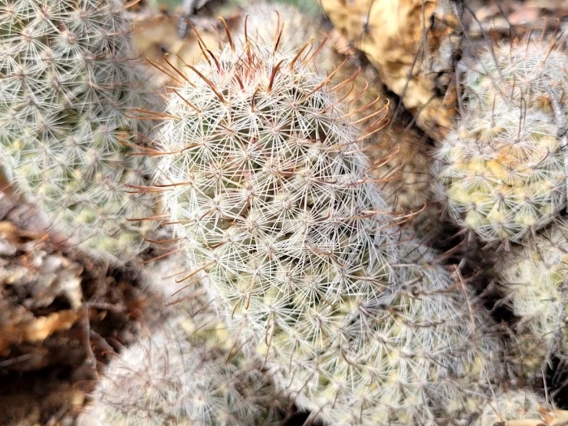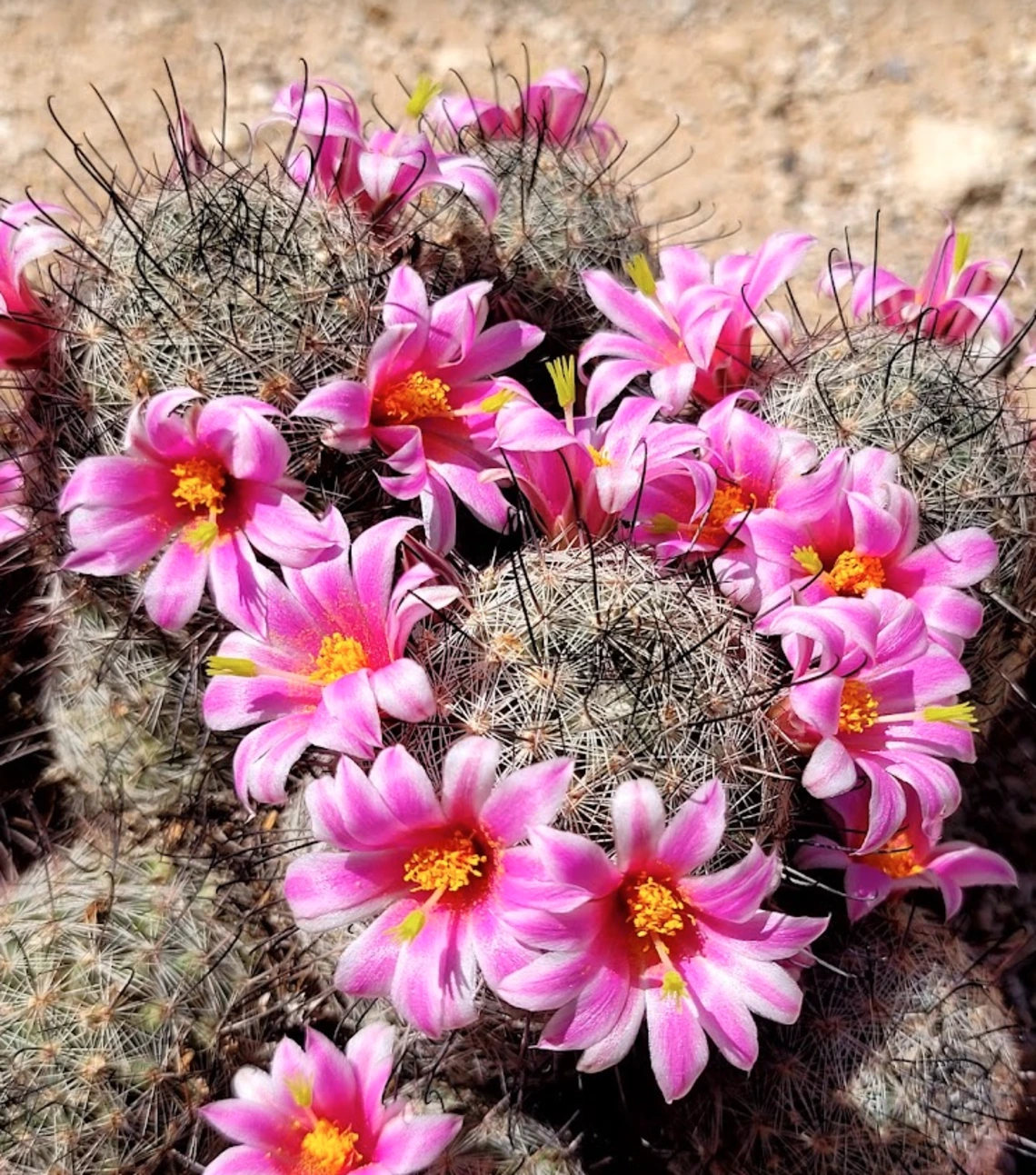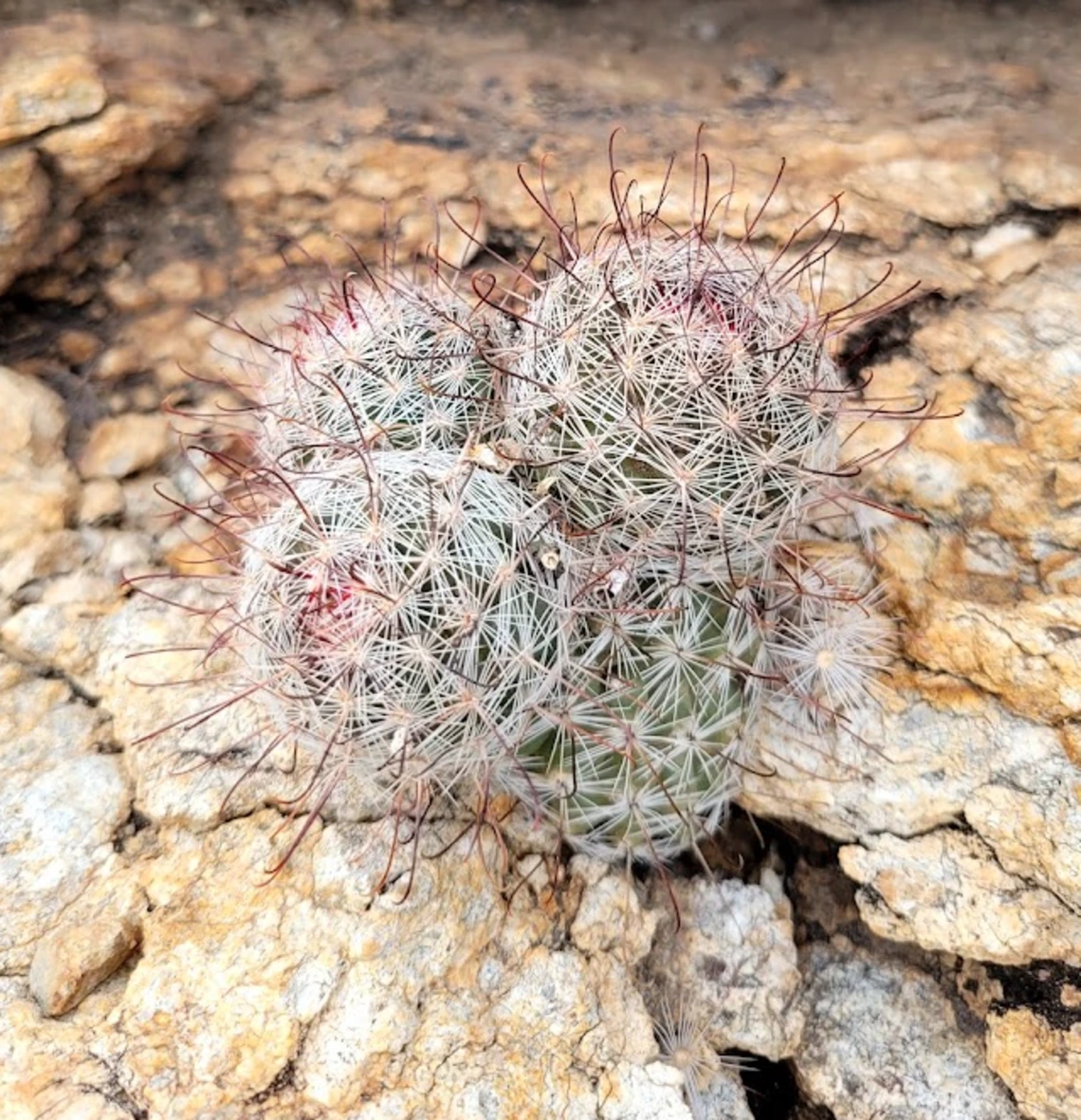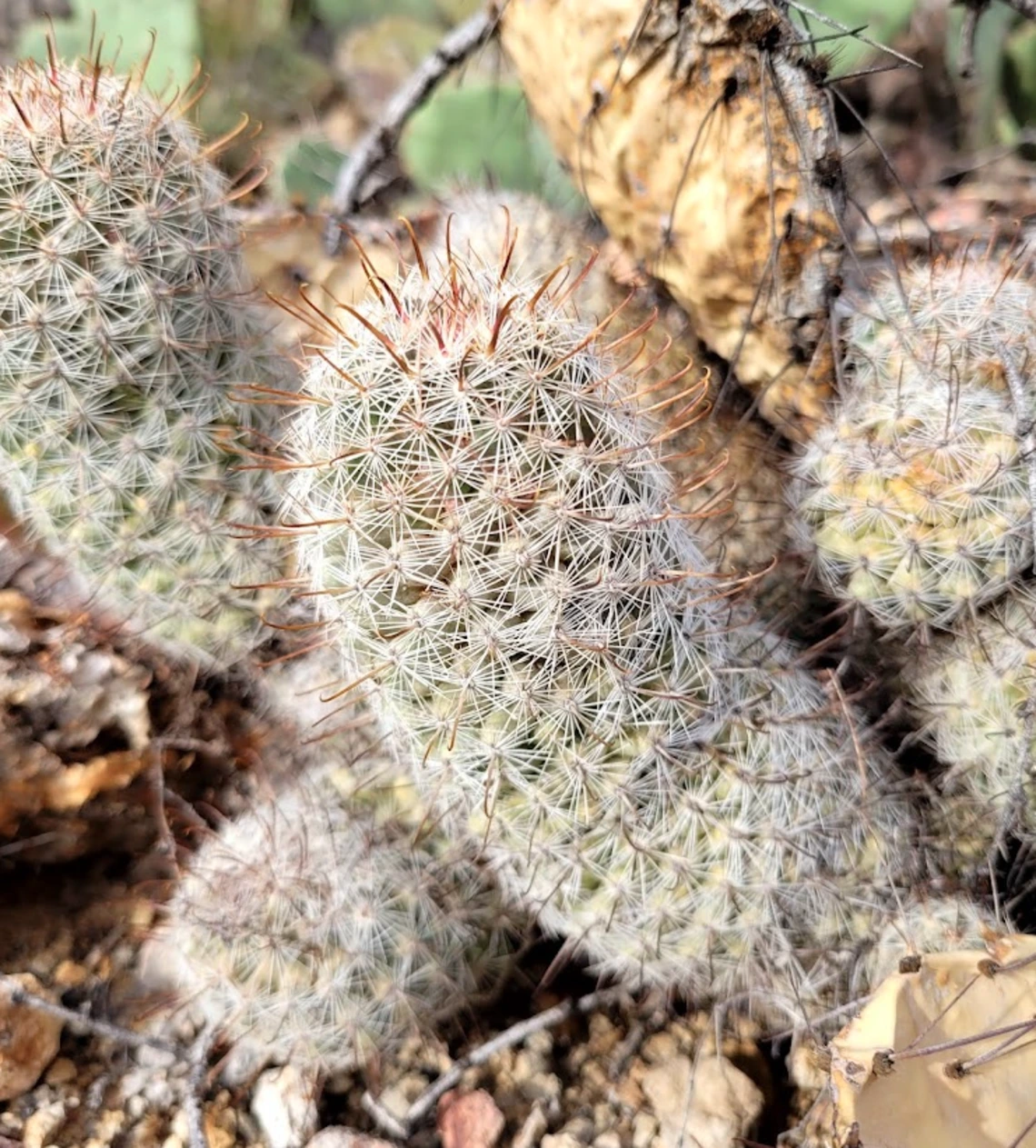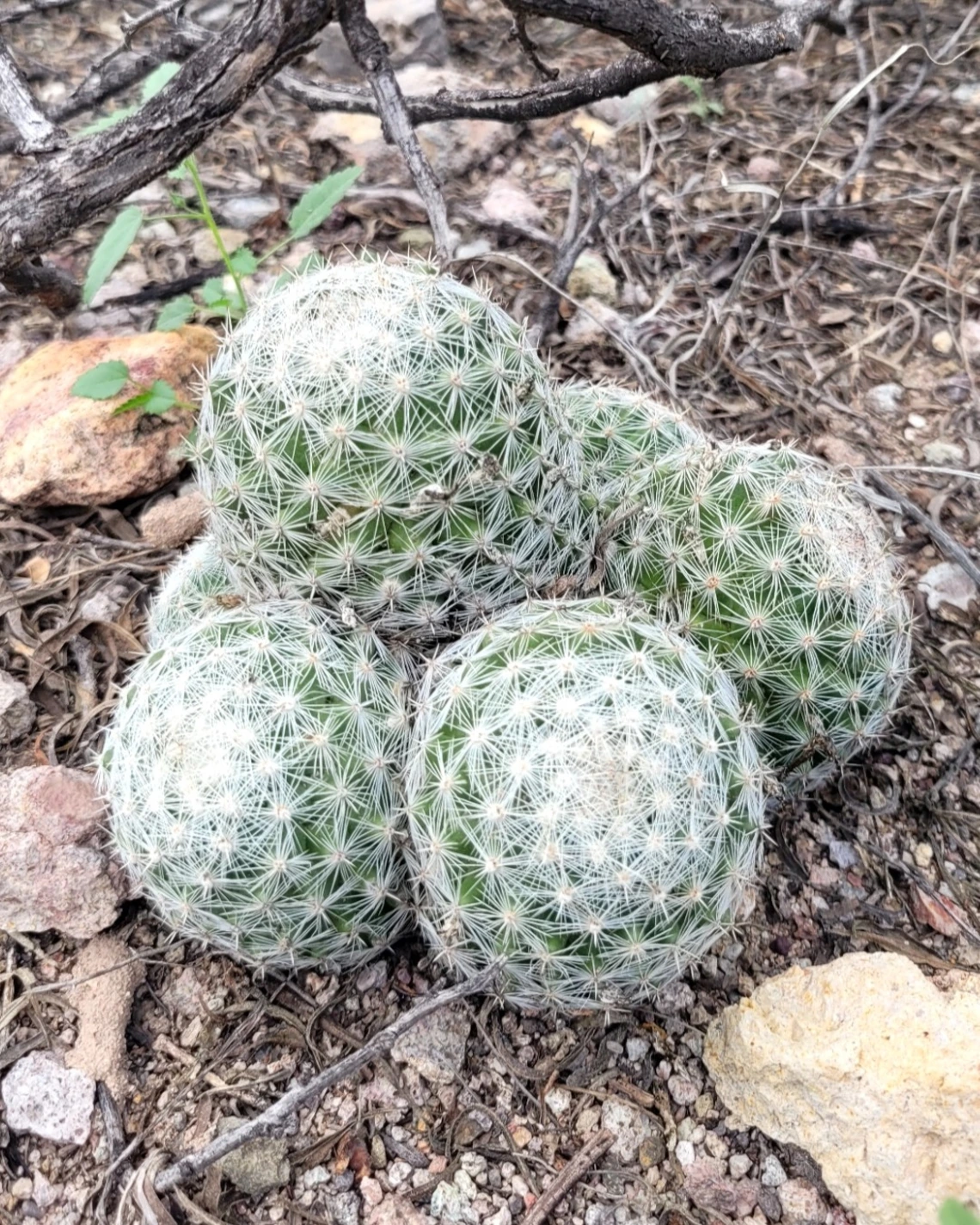Family: Cactaceae
Compound: Mam gra
Geographic Origin: southwestern US, northwestern MX
Characteristics: A small, globose to cylindrical cactus that often pups from the base of the stem with age. The stems are light green to blue-green, growing from 5-15cm (2-6in) in height and 5-10.15cm (2-4in) in diameter, though clumps of stems can approach 30.5cm (12in) or more in diameter. Tubercles are prominent and cylindrical, though not often visible behind dense spines. The 20-35 usually white, radial spines effectively shade the skin of the plant preventing sun damage and helping it to blend into the surrounding rock. They are straight to glabrous and interlacing and about 5-12mm (0.2-0.5in) long. The central spines come in bundles of 1-4. The longest central spine usually forms a hook at the end, though some plants only have a single, short, straight central spine. Flowers are broadly funnel-shaped, bright pink to reddish purple with a distinct yellow to green stigma that sticks out beyond the stamens. Flowers occur in a 'halo' around the top of stems. Blooming occurs spring to fall but each flower only last about five days.
Natural History: Found in a wide variety of soils from silty to rocky, and in many different environments from flats to bajadas and hillsides. Found between 610- 1524m (2,000-5,000ft) in elevation. Common in lower desert habitats but still present higher in elevation, though more tied to open south facing slopes.
Cultivation Notes: Easily grown from seed but can be propagated from offsets as well. If planting in the ground, a well-draining area beneath a small shrub such as creosote is recommended.
For general cactus and succulent propagation information, click here
Ethnobotany: fruit was eaten fresh or dried. It was also boiled and used to treat earaches. Inner pulp of the plant was eaten.
Citations:
Anderson, Edward F. The Cactus Family. 1st ed., Timber Press Incorporated, 2001.
The American Southwest. Retrieved June 21, 2024.
Llifle. Retrieved June 21, 2024.
Southwest Desert Flora. Retrieved June 21, 2024.
SEINet Arizona – New Mexico Chapter. Retrieved June 21, 2024.




